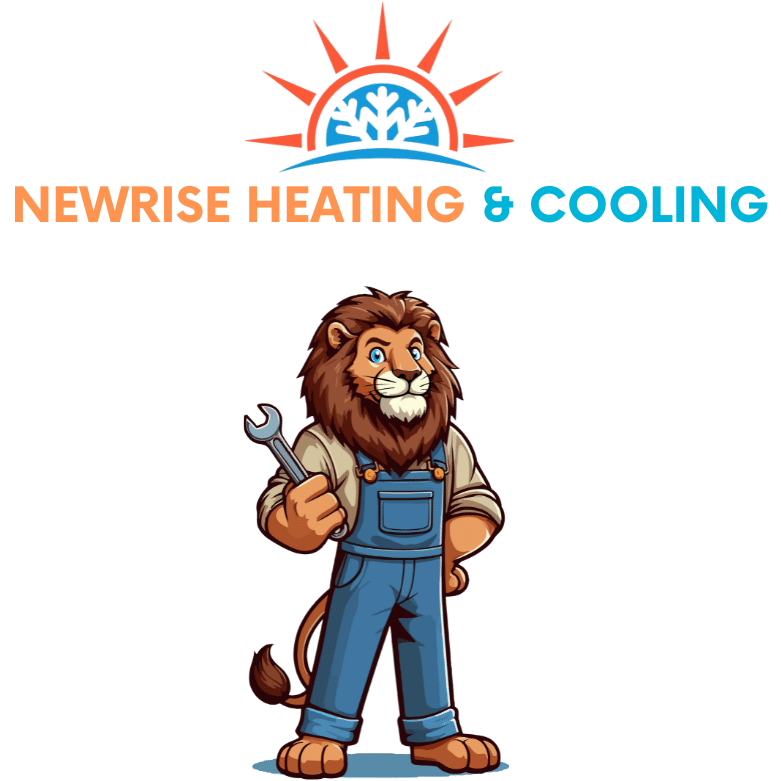Table Of Contents:
Is your heater not working as it should? Many homeowners face this issue during the colder months. In this Heater Troubleshooting Guide, you’ll learn about common reasons your heater fails to operate, quick fixes to get it back on track, and maintenance tips to prevent future issues. This content will help you tackle problems like wear and tear and identify unusual noises, all while improving your indoor air quality. Don’t let a malfunctioning heater disrupt your comfort—let’s explore how you can handle these challenges with NewRise HVAC’s expert advice!
Key Takeaways
- Regularly check and replace your air filter to maintain heater efficiency
- Inspecting the thermostat settings can resolve many common heating issues
- Clear blockages in vents for improved airflow and better heating performance
- Don’t ignore unusual sounds; they may indicate serious underlying problems
- Schedule routine professional maintenance to catch potential issues early
Common Reasons Your Heater Fails to Operate
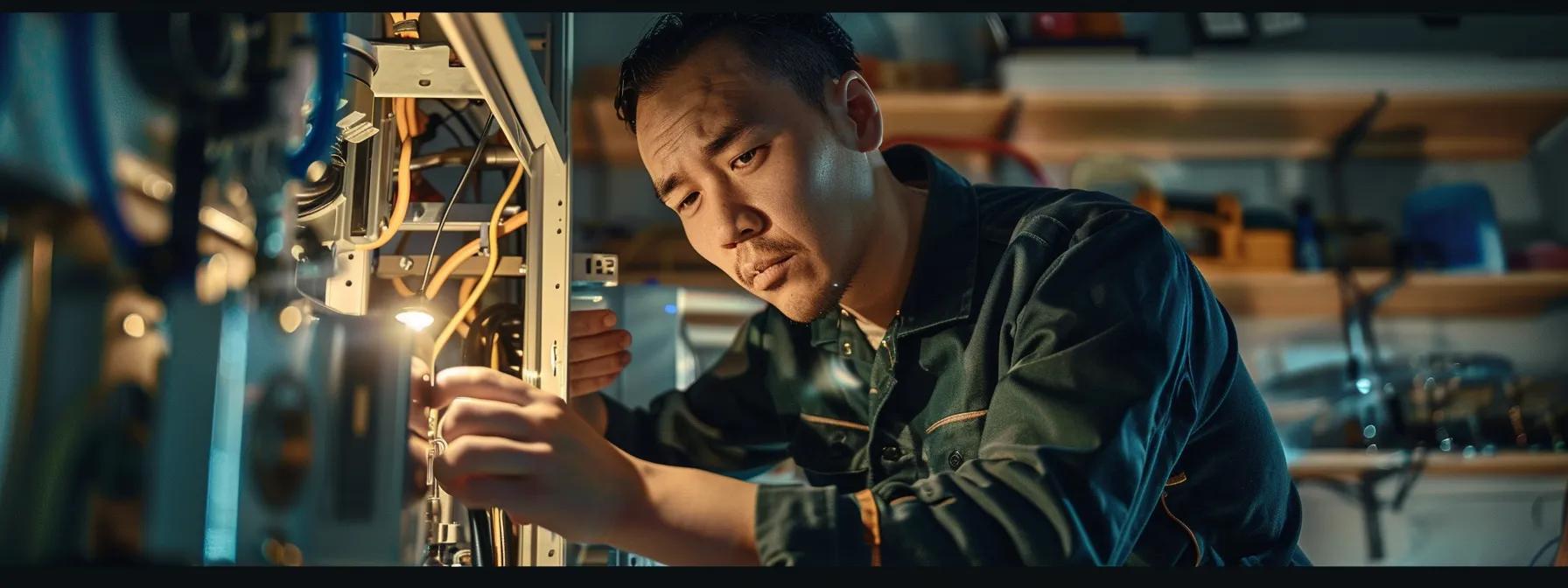
Your heater can fail to operate for several reasons that are often easy to identify. First, check the thermostat and its settings to ensure it’s receiving the right signals. Next, confirm that your heater is properly powered and inspect the circuit breaker and power source. If you have gas units, investigating the fuel supply is essential. Lastly, look for any blockages in air vents, as even small pollutants can hinder performance and create hazards. For professional assistance, contact newrisehvac.
Check the Thermostat and Its Settings
When your heater isn’t working, one of the first things you should do is check the thermostat and its settings. Ensure it’s set to the desired temperature and in the heating mode. Sometimes, adjusting the thermostat can make a big difference, especially if it’s incorrectly set, which can lead to a non-responsive heater.
If you have a propane heater, look for any connection issues or indicators on the thermostat that could point to a problem. Sometimes the flame sensor may not be working properly, causing the heater to shut down. It’s also helpful to check if the batteries in the thermostat need replacing or if the unit requires calibration to function correctly.
Lastly, inspect the wiring and connections of the thermostat. A loose wire can prevent signals from reaching the heater, leading to a lack of heat. For added peace of mind, consulting with a professional for heater repair can ensure that any electrical issues or flue pipe problems are handled safely and effectively.
Ensure the Heater Is Properly Powered
Ensuring your heater is properly powered is crucial for its operation. Start by checking the voltage supply to make sure the unit is receiving the correct amount of power. If there are any interruptions in the electrical flow, such as a tripped circuit breaker, you’ll need to reset it before your heater can function effectively.
For gas heaters, verify that there’s no gas leak and that the fuel supply is steady. If the pressure switch isn’t engaged correctly, it can cause your heater to malfunction. Keeping an eye on these aspects can prevent interruptions in service and ensure your heating system runs smoothly.
While checking power sources, don’t forget about the air filter. A dirty or clogged air filter can lead to inadequate airflow, making your heater work harder than necessary. Regularly replacing or cleaning the air filter can help maintain optimal performance and keep your system operational when you need it most.
Inspect the Circuit Breaker and Power Source
Inspecting the circuit breaker is a crucial step in troubleshooting your heater issues. If your central heating system suddenly stops working, check to see if any breakers have tripped. A simple reset might save you from a costly repair, ensuring the energy supply is consistent and your heater can operate at its best efficiency.
Moreover, don’t overlook the power source, especially for units relying on electrical components. A faulty capacitor can interrupt the functionality of your heater, leading to unexpected breakdowns. Ensure everything is connected properly and there are no signs of wear that could lead to a fault in the system.
Finally, consider keeping an eye on the overall energy consumption of your heating system. If you notice unusually high energy bills, it might signal inefficiencies in your heater’s operation. Regular inspections and quick fixes can help maintain optimal performance, extending the lifespan of your heater and saving you money in the long run.
Investigate the Fuel Supply for Gas Units
Investigating the fuel supply for gas heaters is crucial for ensuring they operate correctly. Start by checking the gas line to see if there’s a blockage or if the supply is shut off. Sometimes, dust or debris can accumulate around the gas valves, leading to restricted flow, which can affect your heater’s performance.
Next, pay attention to the heat exchanger and exhaust system. A compromised heat exchanger can result in improper heating and might even pose hazards like carbon monoxide leaks. Regular maintenance of these components keeps them running efficiently and minimizes safety risks in your home.
If you encounter any issues, consider hiring a professional to inspect your heater. They can assess duct issues and ensure that the entire system, from fuel supply to exhaust, is functioning correctly. This can save you time and prevent future problems, keeping your home warm and safe:
| Step | Action | Notes |
|---|---|---|
| 1 | Check gas line | Look for any blockages or shut-off valves. |
| 2 | Inspect heat exchanger | Ensure no cracks or damage and monitor for carbon monoxide. |
| 3 | Evaluate exhaust system | Check for proper venting to ensure no buildup of harmful gases. |
| 4 | Consult a professional | Get a thorough inspection and address any duct issues. |
Look for Blockages in Air Vents
When your heater doesn’t seem to be working well, check for blockages in the air vents first. Dust, debris, or even furniture can obstruct airflow, making your furnace work harder. If your vents are clogged, it can lead to uneven heating throughout your home, leaving some rooms chilly while others are warm.
Regular inspections of your air vents can prevent bigger issues down the line, such as needing furnace repair. You might be surprised how much better your system runs after a simple cleaning. If you’re not comfortable doing this yourself, enlisting an HVAC professional to assess and clear any blockages can save you time and hassle.
Ignoring blocked air vents can put additional stress on your heating system, potentially leading to malfunctioning parts like the bearings in your boiler. Keeping an eye on the state of your vents not only boosts efficiency but also extends the lifespan of your heater, making it a smart move for any responsible homeowner. So, grab a vacuum or call a technician to help ensure your heating system operates smoothly all winter long!
Sometimes, a heater just needs a little attention to spring back to life. Let’s look at some quick fixes for those common problems.
Quick Fixes for Common Heater Problems
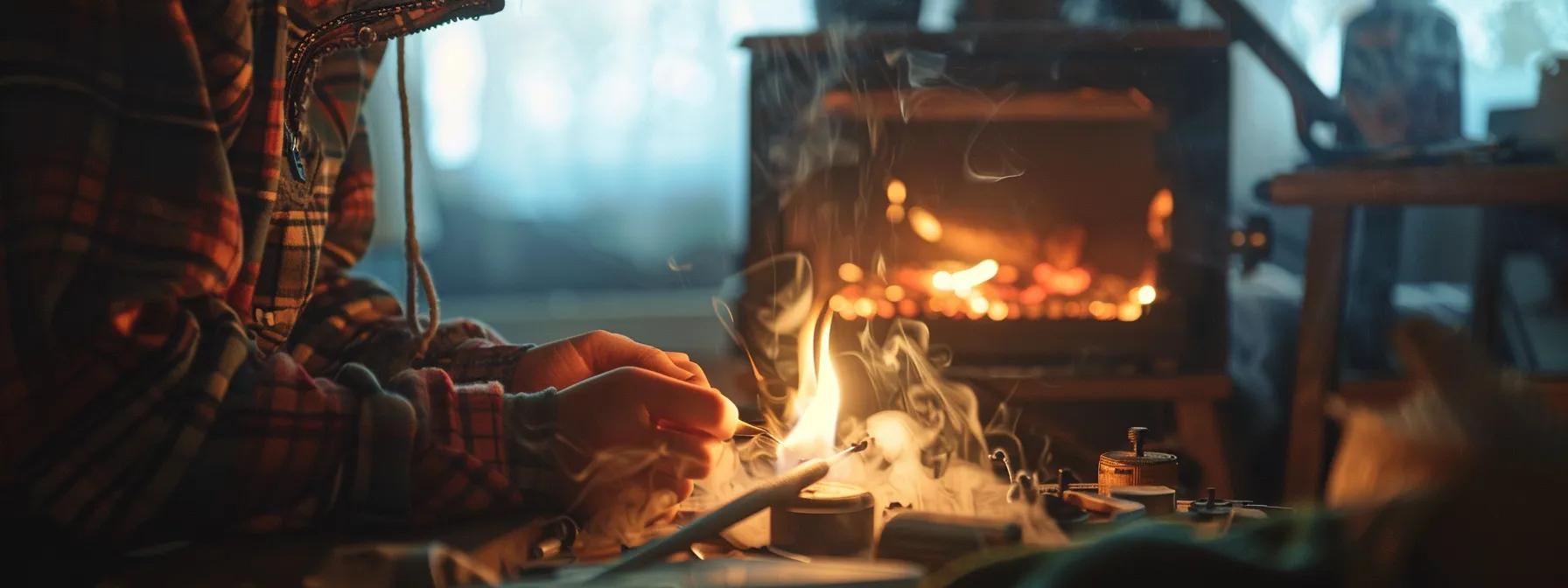
When troubleshooting heater problems, a few quick fixes can make a big difference. Start by learning how to reset your heater, which can resolve many basic issues. Then, follow the steps to replace your air filter to prevent air pollution and enhance airflow. Cleaning the flame sensor and addressing pilot light issues will help maintain safe operation, while ensuring your exhaust system works well keeps harmful gases at bay. Don’t forget about checking the thermocouple and reversing valve for optimal performance as well.
How to Reset Your Heater
Resetting your heater is often a simple task that can resolve various issues with minimal effort. Start by locating the power switch or circuit breaker for your heat pump. Turning it off for about a minute and then switching it back on can help clear any temporary disruptions. This quick reset can sometimes restore functionality without any further intervention.
If your heater is still not working after a reset, take a moment to check for leaks or moisture around the unit. Excess moisture can interfere with your heater’s operation and even affect the valve that controls heating. Addressing any leaks promptly is important to prevent further damage and ensure your system runs efficiently without compromising safety.
Lastly, pay attention to the chimney if your heating system relies on gas or fuel. Ensuring it is clear from obstructions is essential for proper ventilation. If you encounter persistent issues, consider consulting a professional who can perform a more in-depth inspection and provide guidance tailored to your specific situation.
Steps for Replacing the Air Filter
Replacing your air filter is a simple yet effective way to improve your heater’s efficiency. First, turn off your heating system to ensure safety during the replacement process. Next, locate your air filter, which is typically found near the ignition system or blower compartment. If it appears dirty or clogged with soot and carbon, it’s definitely time for a replacement.
Once you’ve located and removed the old filter, check its size and type to ensure you purchase the correct one. Installing a clean filter helps maintain airflow, ensuring your heating element operates efficiently. This not only boosts performance but can also extend the lifespan of your heating system by reducing stress on the components.
After you install the new air filter, remember to reset any maintenance reminders on your HVAC system, if applicable. A regular schedule for changing your air filter is key for optimum HVAC maintenance. You might want to set a reminder every one to three months, particularly during heavy usage seasons, to keep your heater running smoothly and prevent unnecessary breakdowns:
- Turn off your heating system for safety.
- Locate and remove the old air filter.
- Purchase the correct size filter for replacement.
- Install the new filter and ensure it’s secure.
- Set reminders for future replacements.
Cleaning the Flame Sensor
Cleaning the flame sensor is an important step in maintaining the efficiency of your heating system. This small metal rod detects whether there’s a flame present, and if it gets dirty, it might not sense it properly, causing your heater to shut down. Regularly inspecting this component can save you from unexpected freezing temperatures and keep your home warm.
To clean the flame sensor, start by turning off your pump and ensuring everything is safe before you begin. You may need a soft cloth and some light sandpaper to gently remove any buildup on the sensor. Take your time, and avoid using too much force or duct tape, as these can damage the wire connections or the sensor itself.
After cleaning, reassemble everything and turn on your heating system. If you notice that your heater is still not functioning properly, it may be worth checking the surrounding pipes for leaks or looking for other issues. Don’t hesitate to call a professional if the problem persists; their expertise can help address any underlying concerns and ensure your system runs smoothly.
Addressing Pilot Light Issues
If you find that your pilot light has gone out, it’s often a simple issue that can be resolved without calling for costly furnace repairs. Start by checking the pressure settings on your gas supply. If the pressure is low, that could be the reason the pilot light is failing. Ensuring the gas line is properly connected and free of blockages will also help maintain a steady flame.
In some cases, the pilot light may go out due to drafts coming from nearby windows or doors. Make sure there aren’t any drafts affecting your heating system, as they can cause the pilot light to blow out easily. If the area around your furnace is drafty, consider sealing those gaps to create a stable environment for the pilot light to operate effectively.
Should you relight the pilot light without success, it could indicate a more serious issue within your HVAC system. In that case, checking the thermocouple is advisable, as a faulty thermocouple can prevent the pilot light from staying lit. If you’re unsure about diagnosing these issues, reaching out to a professional for assistance can save you time and ensure your heating system is functioning safely.
Maintaining the Exhaust System
Your exhaust system plays a vital role in maintaining proper ventilation within your home. If it’s blocked or malfunctioning, it can lead to heater problems and poor room temperature regulation. Regularly inspecting your exhaust vents for debris or blockages will help keep your heating system running efficiently, minimizing issues related to humidity and airflow.
When maintaining your exhaust system, it’s essential to ensure that the vents are clear and unobstructed. Simple tasks like checking for lint build-up or any external obstructions can go a long way in preventing operational failures. If you notice any strange noises or reduced efficiency from your heater, it might indicate a bigger issue that could require HVAC repair.
Taking a proactive approach to your exhaust system can prevent costly repairs and ensure consistent room temperature in your home. If you suspect that your exhaust system isn’t functioning correctly, consider scheduling an inspection or maintenance check with a professional. This simple step can help you avoid future heater problems and keep your home comfortable all season long.
Fixing a heater is only part of the battle. With the right maintenance tips, you can keep those problems at bay and enjoy a warm home through the cold months.
Maintenance Tips to Prevent Heater Issues
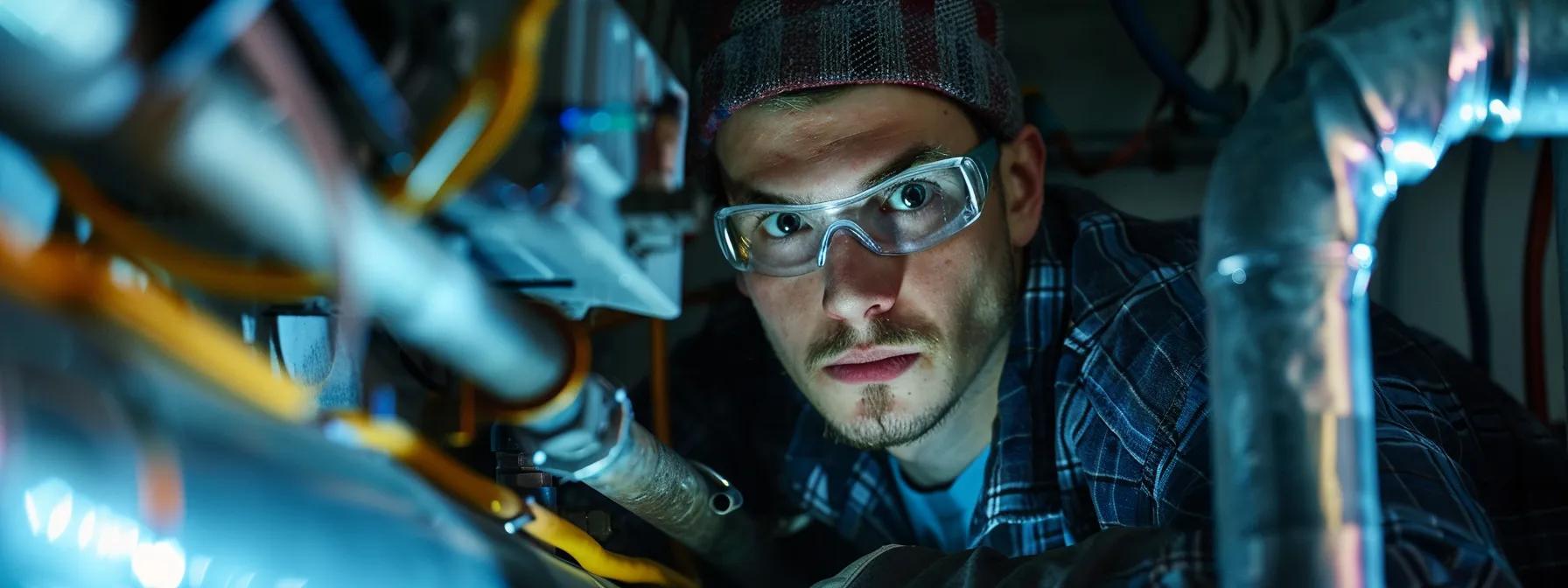
Regularly scheduled service checks help keep your heater working efficiently and can prevent issues from arising, like a tripped circuit breaker during a power outage. Cleaning ductwork and vents is essential too, as debris can create odors and disrupt airflow. Checking insulation around ducts and monitoring the area surrounding your heater ensures smooth operation. Evaluating seasonal performance is key to recognizing potential problems before they escalate.
Regularly Scheduled Service Checks
Keeping up with regularly scheduled service checks helps keep your heating system running smoothly and can prevent common furnace problems down the road. During these checks, professionals often examine the thermostat to ensure it’s calibrated correctly, which directly impacts your home’s comfort level. You can catch many potential issues early on, ensuring you stay warm during the colder months.
Another important aspect of maintenance is examining the sensor and belt of your heating system. A dirty or malfunctioning sensor may cause your furnace to shut down, while a worn-out belt can lead to inefficient operation. Regular maintenance can help identify these issues before they escalate into larger, more costly heating repair needs.
Overall, investing in routine service checks not only prolongs the life of your heating system but also enhances its performance. You’ll notice a difference in efficiency, and this proactive approach often results in lower energy bills. If you find yourself too busy to keep track of maintenance, consider setting reminders or scheduling professionals to handle the upkeep for you:
| Maintenance Task | Frequency | Notes |
|---|---|---|
| Thermostat Calibration | Yearly | Ensure accurate temperature control. |
| Sensor Inspection | Every 6 months | Prevent unwanted shutdowns. |
| Belt Check | Every 6 months | Replace if worn or damaged. |
| Overall System Check | Yearly | Catch issues before they become problems. |
Importance of Cleaning Ductwork and Vents
Cleaning your ductwork and vents is essential for maintaining an efficient heating system. Over time, dust and debris can accumulate, leading to blockages that restrict airflow. This not only affects the temperature in your home but can also cause unnecessary noise as your heater works harder to push air through the system.
Addressing the condition of your ducts directly influences the calibration of your heating unit. When airflow is disrupted, it can lead to inaccurate temperature settings, causing your thermostat to misread and the heater to underperform. Regular cleaning helps ensure that your heater, along with its float switch and other components, functions correctly, minimizing the risk of a complete system failure.
Moreover, keeping your flue clear is crucial for safe operation. A blocked flue can lead to hazardous situations, including the risk of gas buildup. To prevent these issues, regularly checking and cleaning your ducts and vents can save you from costly repairs and promote a safer home environment:
| Maintenance Task | Frequency | Notes |
|---|---|---|
| Duct Cleaning | Every 1-2 years | Improve airflow and reduce noise. |
| Vent Inspection | Every 6 months | Ensure no blockages are present. |
| Flue Inspection | Yearly | Prevent safety hazards and ensure proper venting. |
| Calibration of Thermostat | Yearly | Ensure accurate temperature readings. |
Checking Insulation Around Ducts
Checking the insulation around your ducts is a smart step to maintaining your heating system‘s efficiency. Improper insulation can lead to significant heat loss, which means your heater has to work harder, causing wear and tear on parts such as the limit switch and resulting in higher energy bills. If you notice fluctuating temperatures in your home, it could be a sign that heat is escaping through poorly insulated ducts.
If your heating system runs on oil or natural gas, ensuring that the ducts are properly insulated is even more crucial for efficient combustion. Inadequate insulation may cause your HVAC system to struggle to maintain the desired temperature, leading to unnecessary cycling and potential breakdowns. By keeping your ducts well-insulated, you can enhance energy efficiency and prolong the lifespan of your heating unit.
To effectively check the insulation, look for any gaps, tears, or areas where the insulation might be sagging. You can reach out to an HVAC contractor for a professional assessment if you’re unsure about the condition of your ducts. Taking this proactive measure can help you identify insulation issues before they escalate into more costly repairs, keeping your home comfortable during the colder months.
Monitoring the Surrounding Area for Debris
Monitoring the surrounding area for debris is essential in maintaining your furnace‘s efficiency. Regular inspections will help you spot dirt, dust, and any other buildup around your heating system. Keeping your furnace area clean can prevent unwanted issues, ensuring your heater runs smoothly and effectively.
Make it a habit to check for mildew and debris that may accumulate near vents and ducts. If you notice excessive buildup, it could hinder airflow and lead to poor heating performance. A quick clean-up can make a significant difference in how well your system operates.
Don’t forget to clear out any items that could block access to your furnace. Clutter can trap heat and create safety hazards. By maintaining a tidy space around your heating unit, you’ll not only improve efficiency but also reduce the risk of potential malfunctions:
| Maintenance Task | Frequency | Notes |
|---|---|---|
| Inspection for Debris | Monthly | Look for dirt and mildew near the furnace and vents. |
| Clean Surrounding Area | As Needed | Remove clutter to ensure proper airflow. |
| Clear Blockages | Regularly | Check vents and ducts for obstructions. |
Evaluating Seasonal Performance
Evaluating seasonal performance is key to keeping your heater running efficiently. At the start of each heating season, take a moment to check the airflow in your home. Unobstructed vents allow for proper circulation, ensuring your space stays warm without unnecessary strain on your system.
Next, if you’ve installed a programmable thermostat, use it to monitor and adjust your heating needs effectively. This not only helps in maintaining comfort but can also minimize heating issues that might arise from fluctuating temperatures. Regularly reviewing the settings can assist in optimizing performance, cutting down on energy bills while keeping your home cozy.
Lastly, don’t overlook any signs of mold near your heating system or ducts, as this can lead to health concerns. If you notice any, it’s best to contact a professional HVAC technician for a thorough inspection. They’ll help ensure everything is clean and operating smoothly, allowing you to enjoy consistent warmth all season long:
| Task | Action | Notes |
|---|---|---|
| Check Airflow | Inspect vents and remove obstructions. | Ensure optimal circulation throughout your space. |
| Review Thermostat Settings | Adjust as necessary for efficiency. | Utilize programmable features to save energy. |
| Monitor for Mold | Inspect areas near the heater and ducts. | Call a professional if any is found. |
You know your heater well, but strange noises can signal trouble. Let’s learn how to identify those sounds and what they might mean for your home.
Identifying Unusual Noises From Your Heater

Banging sounds might indicate loose components in your heating system, while humming or buzzing could signal electrical issues needing attention. If you notice sudden stops and starts, it might be time to investigate control problems. High-pitched whistles can suggest airflow issues, and any odd smells could indicate something more serious. Let’s uncover these heater problems and keep your home cozy this climate season.
What Banging Sounds Indicate
If you’re hearing banging sounds from your heater, it often points to loose components within the system. These noises might come from electrical wiring that’s not secured, which can cause vibration and lead to further issues down the line. Keeping an eye on these sounds can save you a lot of trouble, especially if they’re a sign that something bigger might be at play.
Another common cause of banging is condensation within the ducts or heat exchanger. When the humidity in your home is too high, the excess moisture can lead to water damage or even create pressure changes that result in those clanging noises. If you’ve got a humidifier running, make sure it’s set correctly, as improper use can contribute to this problem.
Sometimes, banging sounds can be linked to issues with the pilot light. If it’s flickering or going out often, it can cause pressure imbalances that lead to loud noises as your heater operates. If you can’t resolve the underlying issue, consider checking your warranty for coverage options or reach out to a professional to ensure everything is functioning properly.
What Humming or Buzzing Might Mean
If you hear humming or buzzing from your heater, it often indicates electrical issues that require immediate attention. You might have a loose screw or a faulty capacitor causing these annoying sounds. Ignoring these noises can lead to a breakdown, so it’s wise to schedule heating services to diagnose the problem before it escalates.
Moreover, buzzing can sometimes be linked to your sump pump or other nearby appliances. If the heater shares a circuit with your sump pump, it could create interference, resulting in unusual sounds. Keeping an eye on all connected systems can help you pinpoint the source of the noise effectively.
In some instances, the buzzing may signal airflow problems created by blockages in the drainage pipes or ducts. Clear any obstructions to ensure proper airflow, and if you still hear buzzing, it’s best to consult a professional for a thorough inspection. Taking these steps can help maintain a quiet and efficient heating system in your home.
Diagnosing Sudden Stops and Starts
If your heater seems to start and stop unexpectedly, it might indicate issues with your thermostat settings or electrical components. First, check the thermostat to confirm it’s correctly set; an incorrect setting can lead to frequent cycling. If everything looks good here, it’s time to look for power supply issues, as fluctuations can cause your heater to turn off suddenly.
Another potential culprit behind sudden stops can be a clogged air filter. When the air filter is dirty, it restricts airflow, causing your heater to overheat and shut down for safety reasons. Replacing or cleaning the air filter regularly can help prevent this issue, ensuring your heater operates smoothly all season.
Lastly, listen for unusual sounds accompanying the stops. If you hear clicking noises, it may indicate issues with the heater’s control components or ignition system. Addressing these noises early by consulting a professional can save you from larger problems later on. Consider the following table for a quick reference on diagnosing sudden stops and starts:
| Issue | Possible Cause | Action |
|---|---|---|
| Heater off frequently | Incorrect thermostat settings | Check and adjust the thermostat. |
| Heating system shuts down | Clogged air filter | Replace or clean the air filter. |
| Clicking noise during operation | Control component issues | Consult a professional for repairs. |
Investigating High Pitched Whistles
If you hear high-pitched whistling sounds coming from your heater, it could indicate airflow issues. One common reason for this noise is a clogged filter, which restricts airflow and forces air through tight spaces, creating that annoying whistle. Make sure to check your air filter regularly and replace it if it appears dirty, as doing so can often resolve the sound immediately.
Another possibility for high-pitched whistles is that your ductwork may have leaks or is improperly sealed. When air escapes through cracks or gaps, it creates a whistling noise as it moves through the system. Inspecting your ducts for any gaps and sealing them can enhance your heater’s efficiency while eliminating those whistling sounds.
If the whistling persists after checking the filter and ducts, it might be a sign that your heater’s fan is working harder than it should. An overworked fan can struggle to maintain proper airflow, causing it to produce high-pitched noises. Consider having a professional technician examine the system to diagnose any underlying issues, ensuring your heater operates smoothly and quietly all season long.
Understanding Odd Smells
If you notice strange smells coming from your heater, it’s essential to take them seriously. A burning smell can indicate dust or debris accumulating on the heating elements, which usually isn’t a major issue but can be annoying. If the smell persists after running your heater for a while, it might signal a more significant problem that requires your attention.
Sometimes, you might detect a rotten egg odor. This could be a sign of a gas leak, which can be very dangerous. If you ever catch this smell, turn off the heater immediately and contact a professional for help. Always prioritize safety over comfort when it comes to your heating system.
Moldy or musty odors are another red flag that shouldn’t be ignored. These smells often indicate moisture buildup within your system, which can lead to mold growth. Regularly checking and maintaining your ducts can help prevent this issue, ensuring your home’s air quality stays fresh and healthy while your heater operates properly.
When your heater makes strange sounds, it’s a call for attention. Let’s look at some helpful resources that can guide you through troubleshooting those issues.
Resources for Heater Troubleshooting
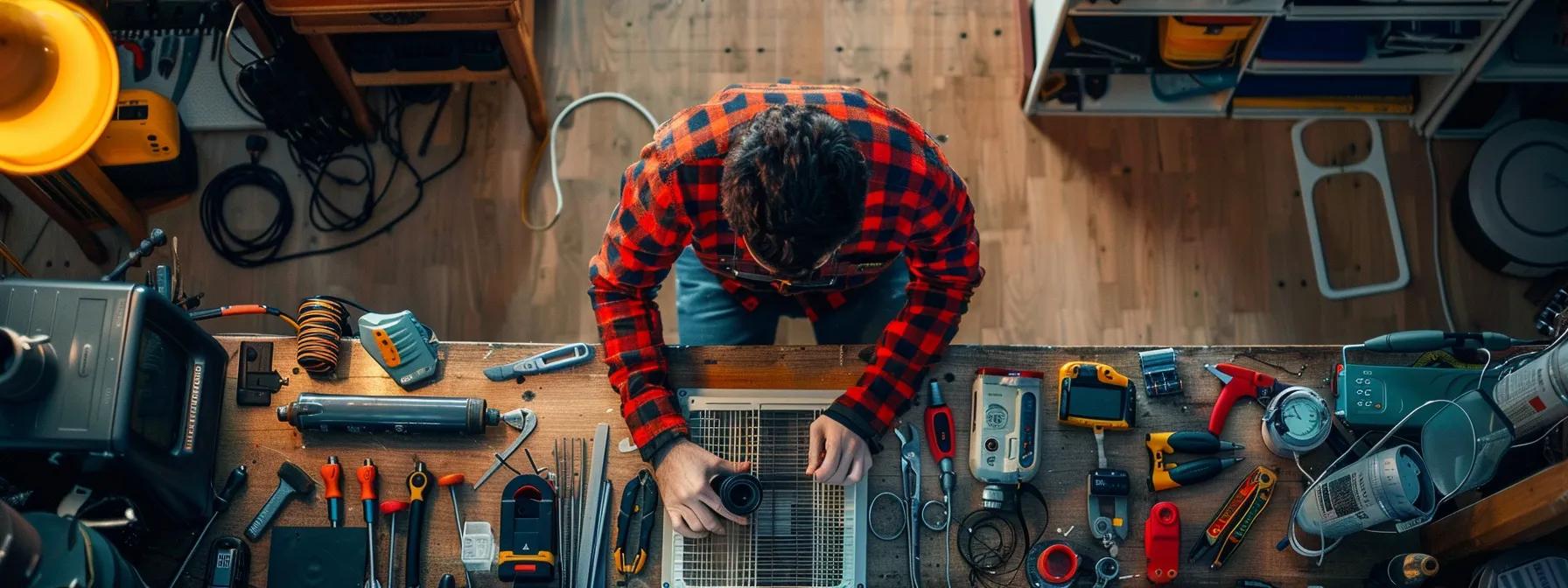
To help you navigate heater issues easily, we’ve gathered a variety of resources tailored for your needs. You can download a handy troubleshooting checklist, watch video guides for common fixes, and browse FAQs addressing frequent heater problems. For added support, access our community forum to share experiences, or reach out to professionals for expert assistance whenever needed.
Downloadable Troubleshooting Checklist
To make troubleshooting your heater easier, we’ve created a downloadable checklist that provides step-by-step guidance. This handy resource covers common heater issues like thermostat settings, power supply verification, and air filter maintenance. With this checklist, you can systematically address problems, ensuring you don’t overlook critical steps that might keep your system from running efficiently.
Using the troubleshooting checklist can empower you to take control of your home heating situation. Instead of feeling overwhelmed when your heater isn’t functioning as it should, you can quickly refer to the list and pinpoint the likely issue. By tackling it yourself, you not only save on repair costs but also gain confidence in maintaining your heater.
Once you’ve completed the checklist, you can assess whether more complex problems exist that may need professional evaluation. It’s designed to give you a clear understanding of your heater’s functionality and the troubleshooting steps you can take. Whether you’re a DIY enthusiast or new to home maintenance, this checklist is a practical tool that can help you ensure your heating system operates reliably throughout the winter months.
Links to Video Guides for Common Fixes
If you’re looking for quick solutions to common heating issues, video guides can be incredibly helpful. These guides often provide clear visual demonstrations that show you exactly how to troubleshoot problems, such as resetting your heater or replacing an air filter. Watching someone go through the steps can make the process feel less daunting and can save you time in understanding the necessary fixes.
Many videos also address recurring heater problems, giving you actionable insights that cater to your specific concerns. For instance, you can learn how to effectively clean the flame sensor or check for blockages in your air vents, helping you maintain a more efficient heating system. Engaging with these resources empowers you to tackle minor repairs yourself, potentially saving you from calling in a technician for simple fixes.
To get started, browse trusted video platforms where professionals share their knowledge, ensuring you follow reliable advice. Make it a point to check out customer reviews and feedback on these videos to find the most effective guides that cater to your situation:
- Introduction to basic heater troubleshooting
- How to replace an air filter
- Steps to reset your heating system
- Cleaning the flame sensor effectively
FAQs on Heater Issues
If you’re wondering why your heater isn’t functioning as it should, you’re not alone. Many homeowners experience common issues, like strange noises or inconsistent heat. Frequently asked questions often focus on simple fixes, such as how to reset your thermostat or when to replace your air filter to keep your heater running efficiently.
Another common concern is related to unusual smells, which can indicate problems with dust buildup or, in worse cases, a gas leak. Being aware of these signs can help you act quickly, as ignoring them may lead to more serious issues. If you’re uncertain about the smells you’re noticing, it’s wise to consult a professional for clarification.
Contact Information for Professional Help
If you find yourself facing persistent heater issues that simple fixes can’t resolve, reaching out to a professional is a smart move. Look for a reliable heating and cooling company that has experience in diagnosing and repairing various types of heating systems. They can provide the expertise needed to ensure your heater runs efficiently and safely, eliminating the guesswork for you.
When contacting a professional, it’s helpful to have notes about the problems you’ve been experiencing. Share specific details, such as unusual noises, inconsistent heating, or any safety concerns you’ve noticed. This information will assist the technician in quickly identifying the issue when they arrive, allowing them to provide an effective solution without wasting any time.
Don’t hesitate to ask for recommendations from friends or family if you’re unsure which company to contact. Word-of-mouth referrals can lead you to trusted professionals who offer quality service. With the right help, you can restore comfort to your home and avoid the stress and hassle of dealing with heating issues during the chilly months.
Community Forum for Sharing Experiences
Joining a community forum dedicated to heater troubleshooting can be a game-changer for homeowners like you. These platforms allow you to connect with others who have faced similar heating issues, sharing personal experiences and solutions that have worked for them. Engaging with fellow users can provide you with practical insights that might not be found in traditional guides.
In addition to gaining knowledge from other users, a community forum also gives you a chance to ask specific questions about your heater problems. Whether you’re dealing with strange noises or inconsistent heating, chances are someone else has experienced the same issue and can offer advice. It creates an interactive space where you can learn from others and even find your own solutions through shared insights.
Beyond technical support, community forums foster a sense of belonging among homeowners dealing with similar challenges. You can exchange tips and stories about your heating systems, transforming what can often be a frustrating experience into a shared journey. This sense of camaraderie can make troubleshooting much more enjoyable, all while helping you keep your home warm and comfortable during the colder months.
You’ve gathered the know-how for troubleshooting your heater. Now, let’s wrap it up with some key tips that will keep your home warm and cozy.
Summary of Key Heater Troubleshooting Tips
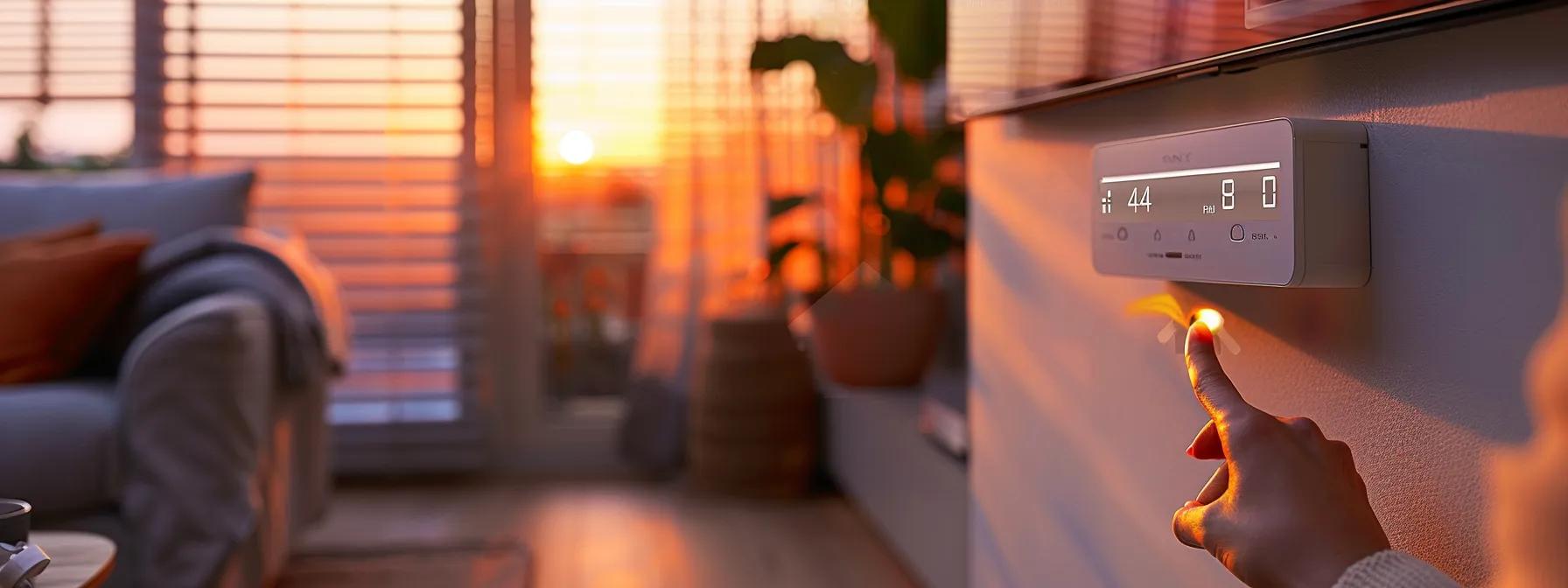
When it comes to heater troubleshooting, keeping key steps for quick fixes in mind can make a big difference. Avoid common mistakes that could lead to bigger issues, and remember that regular maintenance is essential for optimal performance. Knowing when to seek professional help is just as important for efficient heating solutions, ensuring your home stays warm and comfortable all season long.
Recap of Essential Steps for Quick Fixes
When your heater starts acting up, a few quick tips can help you get it back on track without too much hassle. First, check the thermostat settings to ensure they’re correct; sometimes, a misadjusted thermostat is all it takes to fix the problem. If everything looks good there, don’t forget to reset your heater, which can clear many temporary issues and restore its functionality.
Another simple yet effective step is replacing or cleaning the air filter. A dirty filter can block airflow, making your heater work harder and leading to inefficiency or even breakdowns. So, keeping your air filter clean is a quick and easy fix that contributes significantly to the overall performance of your heating system.
Finally, don’t overlook the importance of checking for blockages in air vents. Make sure to remove any dust, debris, or furniture obstructing airflow. By taking a few minutes to ensure your vents are clear, you’ll enhance your heater’s efficiency, leaving you with a cozy home all season long.
Common Mistakes to Avoid
One common mistake you might make is overlooking the air filter. A dirty or clogged filter can significantly reduce your heater’s efficiency, leading to higher energy bills and uneven heating in your home. Make it a habit to check and replace your air filter regularly; this simple action can prevent stress on the system and keep your spaces warm and cozy.
Another misstep is ignoring unusual noises coming from your heater. Whether it’s banging, buzzing, or whistling, these sounds often indicate underlying issues that need to be addressed. By promptly investigating and fixing these noises, you can avoid more serious problems and costly repairs down the line.
It’s also easy to neglect regular maintenance checks for your heating system, believing that it will work just fine without attention. Skipping these scheduled services can lead to small issues becoming major complications. Scheduling routine maintenance helps catch potential problems early, ensuring your heater runs efficiently and extends its lifespan, saving you money in the long run.
Encouragement to Practice Regular Maintenance
Regular maintenance is essential to keeping your heater in top shape. By scheduling routine checks, you can identify potential issues before they turn into costly repairs. Simple tasks like cleaning filters and checking for blockages help ensure your system runs efficiently, saving you money in the long run.
Imagine enjoying a warm home throughout winter without unexpected breakdowns. By taking a proactive approach to maintenance, you’re not only maximizing your heater’s performance but also extending its lifespan. Regular maintenance allows you to catch problems early, often before they become major headaches.
So, make it a habit to set reminders for heater maintenance tasks. Whether you’re checking the air filter every month or scheduling a professional service yearly, staying on top of these responsibilities will keep your home cozy and comfortable. You’ll appreciate the peace of mind knowing your heating system is in good shape and ready to keep you warm all season long:
- Schedule routine maintenance checks.
- Clean or replace air filters regularly.
- Inspect for blockages in vents and ducts.
- Take note of unusual sounds or odors.
- Keep track of seasonal performance evaluations.
Importance of Knowing When to Seek Professional Assistance
Knowing when to seek professional assistance for heater issues is essential for keeping your home warm and safe. If you’ve tried common troubleshooting steps, like checking the thermostat or replacing the air filter, and your heater is still not functioning, it’s time to call in an expert. They have the experience and training to identify underlying problems that you may not be equipped to handle on your own.
For example, if you hear unusual sounds such as banging or hissing that escalate over time, those could indicate serious internal issues. Ignoring these sounds could lead to more significant damage, requiring costly repairs. A professional will quickly assess the situation and provide the necessary solutions to get your heater back on track, saving you both time and money in the long run.
Remember, while DIY solutions can help with basic maintenance, some tasks require specialized knowledge and tools. If you encounter persistent issues or safety concerns, like gas leaks or carbon monoxide detection, don’t hesitate to call a technician. Prioritizing your safety and comfort is vital, and a professional can ensure that your heating system operates efficiently and reliably throughout the season.
Final Thoughts on Efficient Heating Solutions
Efficient heating solutions start with understanding your system and addressing common issues before they escalate. By following basic troubleshooting guidelines, like checking your thermostat settings and ensuring clear airflow, you can often solve heating problems without needing professional help. Taking a proactive approach in these areas helps you keep your heater running smoothly and your home comfortable.
Regular maintenance plays a significant role in the overall performance of your heating system. Simple tasks such as replacing air filters and monitoring for unusual sounds can prevent larger issues down the line. By staying vigilant, you not only ensure a cozy environment but also extend the lifespan of your heater, avoiding costly repairs in the future.
If you encounter persistent problems or feel unsure about your heating system‘s functionality, don’t hesitate to reach out to experts. Their insights can guide you towards effective solutions tailored to your specific needs. Remember, prioritizing your heating system‘s health enhances your comfort and peace of mind, especially during the colder months when efficient heating is essential.



